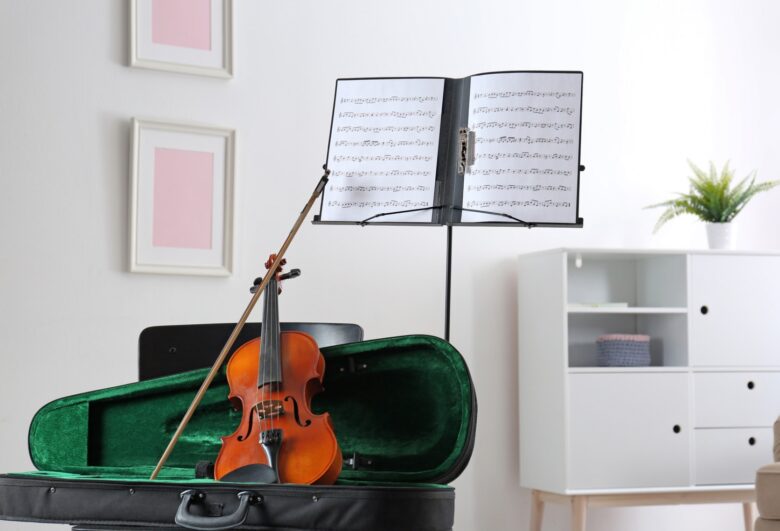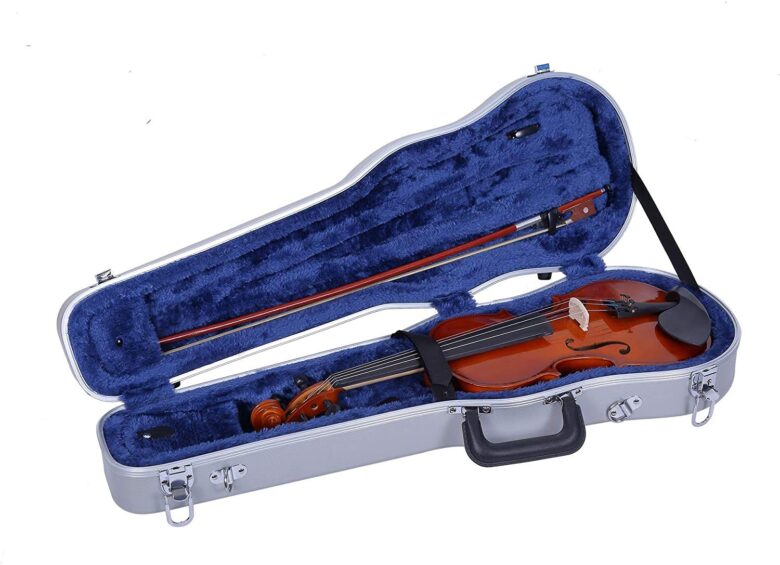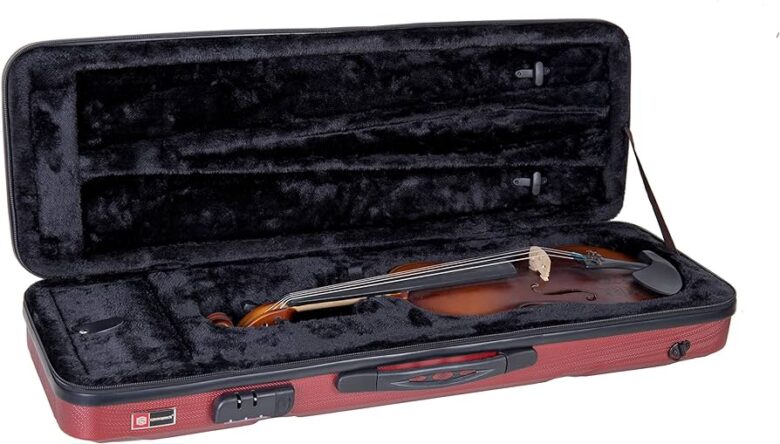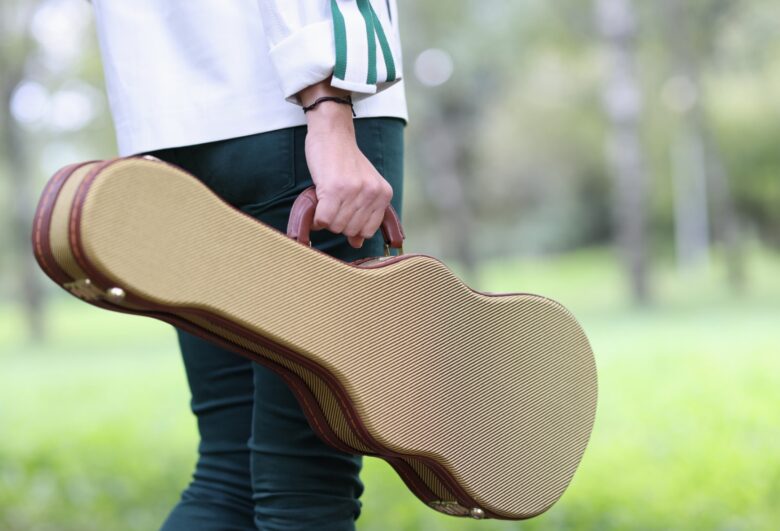As a musician, your instrument is not just a tool but an extension of yourself. Achieving the perfect balance between protection and transportability for your beloved violin is crucial. While elegant cases are certainly desirable, the practicality of a comfortable and secure case should never be underestimated. When you select a violin case, you’re not just choosing a means of transportation; you’re choosing a guardian for your artistry. Your violin case should not only shield your instrument from the elements but also provide a safe sanctuary during travel, rehearsal, and performance.
With many options available, you can find violin cases that cater to your specific needs. From lightweight and compact cases ideal for frequent travel to heavy-duty options that offer the highest level of protection, the world of violin cases is diverse. Factors such as the type of music you play, the frequency of your travels, and your personal style all play a role in determining the perfect case for you. In this exploration of violin case types, we will delve into the features, materials, and considerations that define the best violin cases for different situations and needs. After all, your instrument’s safety and your peace of mind are paramount, and finding the right case is a step toward achieving that harmony.

Source: canva.com
Contents
The Importance of a High-Quality Violin Case
A high-quality case is necessary for protecting your valuable and fragile instrument. Violins are susceptible to several risks while being transported and stored, including:
- Physical impacts or drops that can crack the delicate wood
- Changes in temperature and humidity that can warp the wood
- Dust buildup over time, especially rosin dust near the varnish
A high-quality violin case should help you mitigate these risks.
Type of Violin Cases
Violin cases come in various types and levels of protection.
Hardshell cases

Source: amazon.com
Hardshell cases represent the pinnacle of protection for your violin. They feature rigid external shells constructed from materials such as wood, metal, carbon fiber, or ABS plastic. This robust exterior provides an exceptional defense against physical impacts, ensuring your instrument remains unscathed even in the face of rough handling or accidental drops. Within these cases, you’ll find a plush interior, typically lined with foam or fabric, which serves to cradle and cushion your violin, shielding it from vibrations and shocks during transit. Many professional musicians and frequent travelers opt for hardshell cases, as they offer the ultimate safeguard for their precious instruments, allowing them to embark on tours and performances with confidence in their violin’s safety.
Softshell cases
Softshell cases offer a more lightweight and versatile alternative to hardshell cases. These cases are often crafted from durable materials like Cordura nylon or leather, providing a reasonable degree of impact protection while remaining lightweight and easy to carry. The soft outer shell is known for its scratch-resistant properties, ensuring that your case looks great even after extended use. Inside, a plush and cushioned inner lining cradles your violin, safeguarding it from scratches and minor bumps. While softshell cases may not offer the same level of protection as their hardshell counterparts, they strike a balance between protection and portability, making them a popular choice among students, casual players, and those seeking a lighter, more manageable option for their violin.
Hybrid cases

Source: medium.com
Hybrid cases represent a harmonious fusion of the best attributes found in hard and softshell cases. These cases typically feature a rigid exterior, often constructed from materials like thermoplastic, providing a level of protection comparable to hardshell cases. However, the interior of hybrid cases is adorned with a soft fabric lining, which ensures that your violin is cradled gently and protected against scratches and minor impacts. This combination of protective strength and a lightweight, cushioned interior makes hybrid cases a favorite among musicians who seek the perfect balance between safeguarding their instrument and ease of transport. Whether you’re a versatile performer constantly on the move or a player who values the convenience of a lightweight case without compromising on protection, hybrid cases offer an appealing solution for your violin protection needs.
The ideal violin case is a highly individual choice, tailored to the unique needs and preferences of each musician. Finding the perfect case for your beloved instrument is not just a matter of convenience; it’s about ensuring that your violin is protected and ready to perform at its best whenever and wherever you need it. To get the ultimate violin case, here are some essential considerations to keep in mind:
Violin size compatibility
Ensuring proper violin fit is crucial for protection. Cases come in full, 3/4, 1/2, and smaller sizes to match common violin sizes. You need to measure your violin’s body dimensions like length, width, and depth and compare it to interior case dimensions. There should be a snug fit without squeezing.
Likewise, check that the neck can fit comfortably without bending when the violin is in the case. For young students with fractional sizes, fit is especially important. Some cases may accommodate full-size and 3/4 violins. You may also need to confirm sizing to find an optimal violin and case pairing.

Source: canva.com
Protective features and Durability
The ideal case should have a tough exterior shell to absorb impacts and prevent crushing. Materials that offer this protection include carbon fiber, ABS plastic, wood laminate, or metal that offer durability.
For the interior cushioning, it should be soft enough to prevent scratching but snug to immobilize the instrument. A shaped neck cushion provides support while high-quality hardware like hinges, latches, handles, and edge trim ensures years of smooth operation.
You might also want to opt for integrated hygrometers and thermometers to enable monitoring case conditions. Lastly, prioritize protective features and durability when picking a bam violin case to get that peace of mind. You can check that a stable base construction prevents tipping while smooth wheels make transport easy when desired.
Conclusion
Selecting the ideal violin case is one of the most significant investments a violinist can make, safeguarding their instrument’s well-being. Ensuring proper size compatibility prevents potential damage from improper fit and movement, while prioritizing protective features like robust shell materials, secure interior restraints, and durable hardware guarantees protection against the bumps and jostles of a musician’s journey. This choice extends beyond convenience; it’s a commitment to preserving the artistry, history, and soul of the music that resonates from your violin.
